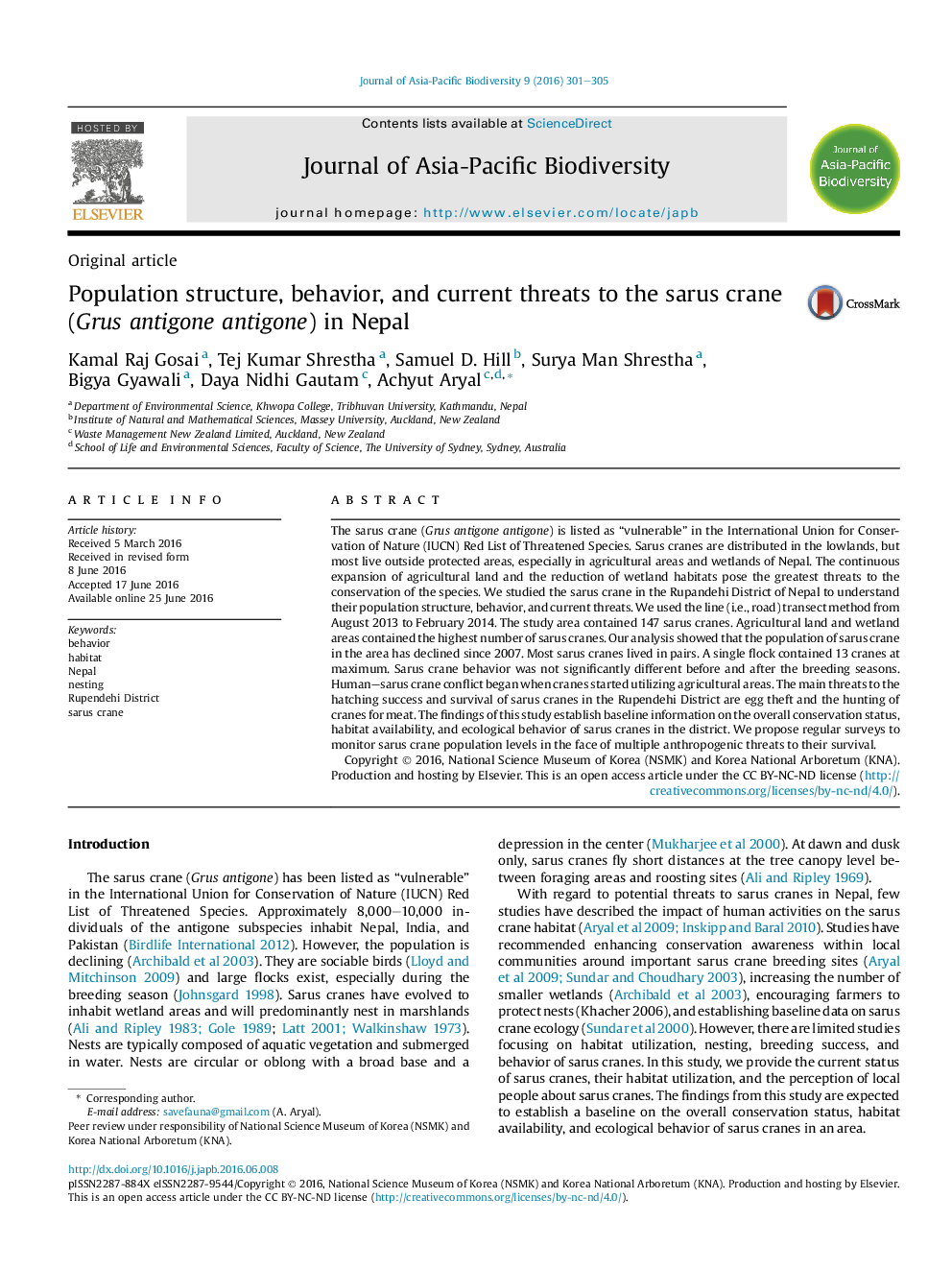| کد مقاله | کد نشریه | سال انتشار | مقاله انگلیسی | نسخه تمام متن |
|---|---|---|---|---|
| 4394925 | 1618294 | 2016 | 5 صفحه PDF | دانلود رایگان |
The sarus crane (Grus antigone antigone) is listed as “vulnerable” in the International Union for Conservation of Nature (IUCN) Red List of Threatened Species. Sarus cranes are distributed in the lowlands, but most live outside protected areas, especially in agricultural areas and wetlands of Nepal. The continuous expansion of agricultural land and the reduction of wetland habitats pose the greatest threats to the conservation of the species. We studied the sarus crane in the Rupandehi District of Nepal to understand their population structure, behavior, and current threats. We used the line (i.e., road) transect method from August 2013 to February 2014. The study area contained 147 sarus cranes. Agricultural land and wetland areas contained the highest number of sarus cranes. Our analysis showed that the population of sarus crane in the area has declined since 2007. Most sarus cranes lived in pairs. A single flock contained 13 cranes at maximum. Sarus crane behavior was not significantly different before and after the breeding seasons. Human–sarus crane conflict began when cranes started utilizing agricultural areas. The main threats to the hatching success and survival of sarus cranes in the Rupendehi District are egg theft and the hunting of cranes for meat. The findings of this study establish baseline information on the overall conservation status, habitat availability, and ecological behavior of sarus cranes in the district. We propose regular surveys to monitor sarus crane population levels in the face of multiple anthropogenic threats to their survival.
Journal: Journal of Asia-Pacific Biodiversity - Volume 9, Issue 3, 1 September 2016, Pages 301–305
